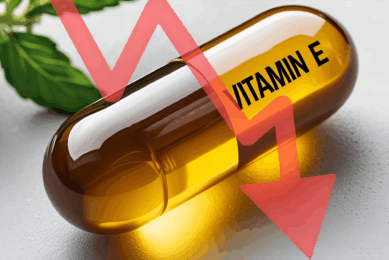Research: Organic AA complexes improve vitamin stability in premixes
Researchers at the University of Minnesota studied the effect of metal specific amino acid complexes and inorganic trace minerals on vitamin stability in premixes.
Stability of vitamin activity in a swine premix containing metal specific amino acid complexes, inorganic trace minerals, or no trace minerals was evaluated over a 120-day storage period.
Two vitamin-trace mineral premixes containing either metal specific amino acid complexes or inorganic trace mineral sources were formulated to contain 200% of NRC (1988) sow requirements for I, Cu, Zn, Mn, Fe, and Se based on a 5 g/kg dietary inclusion rate.
A separate vitamin premix containing no trace minerals served as the control.
The vitamin premix and the two vitamin-trace mineral premixes were formulated to contain the same level of vitamins. Vitamin levels exceeded NRC (1988) and were chosen to represent “typical” industry levels based on an informal survey of vitamin levels in commercial premixes in the USA.
Premixes were stored in an environmentally controlled feed storage room and samples were collected every month to determine vitamin activity.
Results
Minimal monthly vitamin stock losses in activity (0–1%) were observed for all vitamins except cyanocobalamin (2.8%) and choline (1.3%).
Pantothenate, vitamin E, riboflavin, biotin and niacin were most resistant to destruction, while menadione, retinol, vitamin B-6, and thiamine were subject to the greatest loss of activity during the 120-day storage period.
Use of metal specific amino acid complexes in vitamin-trace mineral premixes significantly reduced the loss of retinol, menadione, cyanocobalamin, thiamine, folates, vitamin B-6, and choline activity compared to losses of vitamin activity in premixes containing inorganic trace minerals.
Activity losses in retinol, cyanocobalamin, thiamine, and choline were similar between the vitamin premix and the vitamin-complexed trace mineral premix.
Biotin activity was undetectable in the vitamin-complexed trace mineral premix due to unexplained analytical interference.
Each vitamin was ranked according to relative vitamin assay cost, loss in vitamin activity per month, and susceptibility to multiple stress factors.
This ranking was used to identify vitamins that could represent overall vitamin activity in a premix and could be assayed at a reasonable cost for a feed manufacturing quality control program.
Retinol was identified as the best indicator vitamin, followed by thiamine, menadione, and cyanocobalamin.
Conclusion
These results suggest that vitamin stability in swine vitamin-trace mineral premixes is improved when using metal specific amino acid complexes compared to inorganic trace mineral sources.
More liberal safety margins for vitamins may be needed when formulating vitamin-trace mineral premixes using inorganic sources of trace minerals.
References and further reading may be available for this article. To view references and further reading you must purchase this article.











